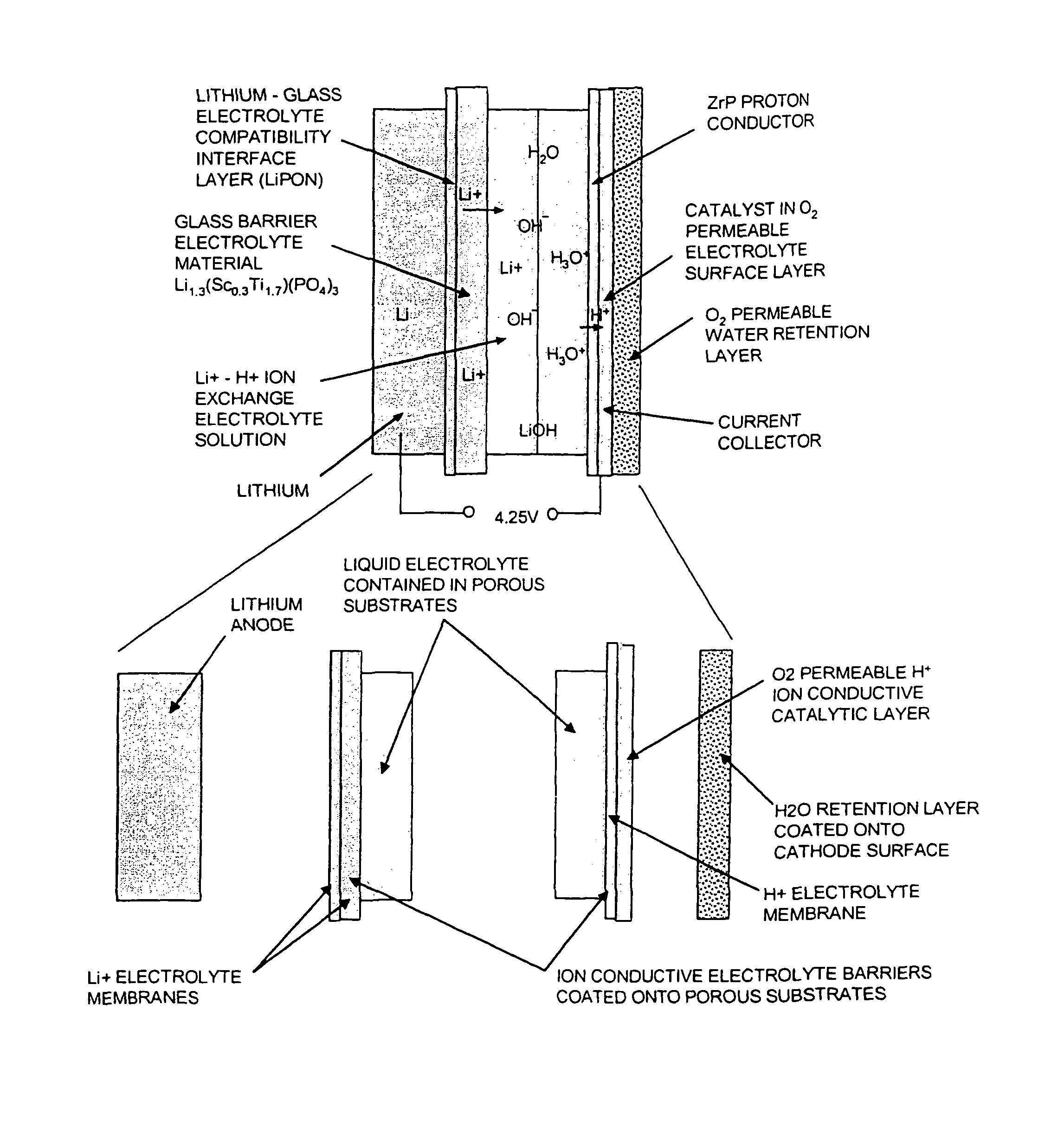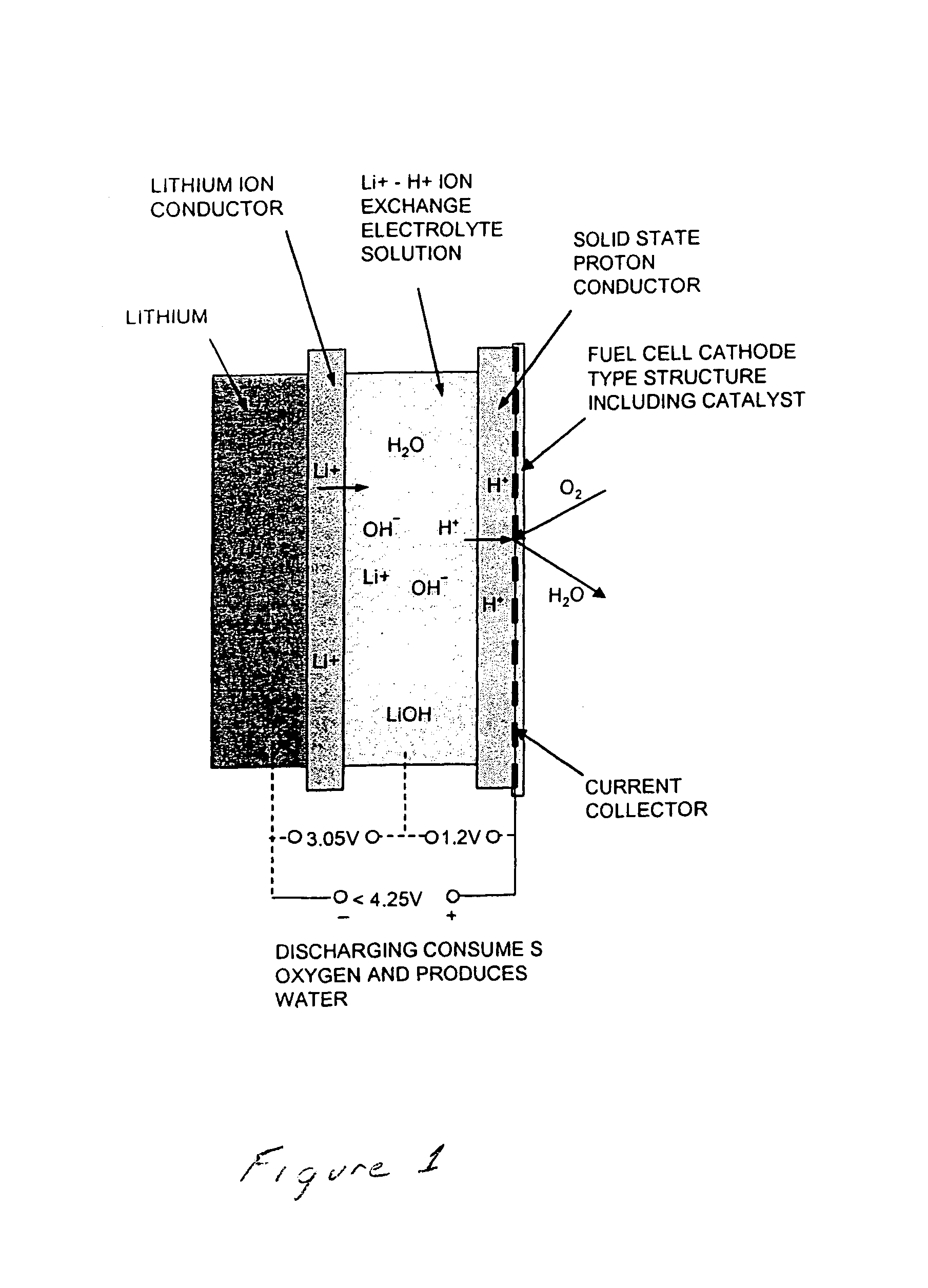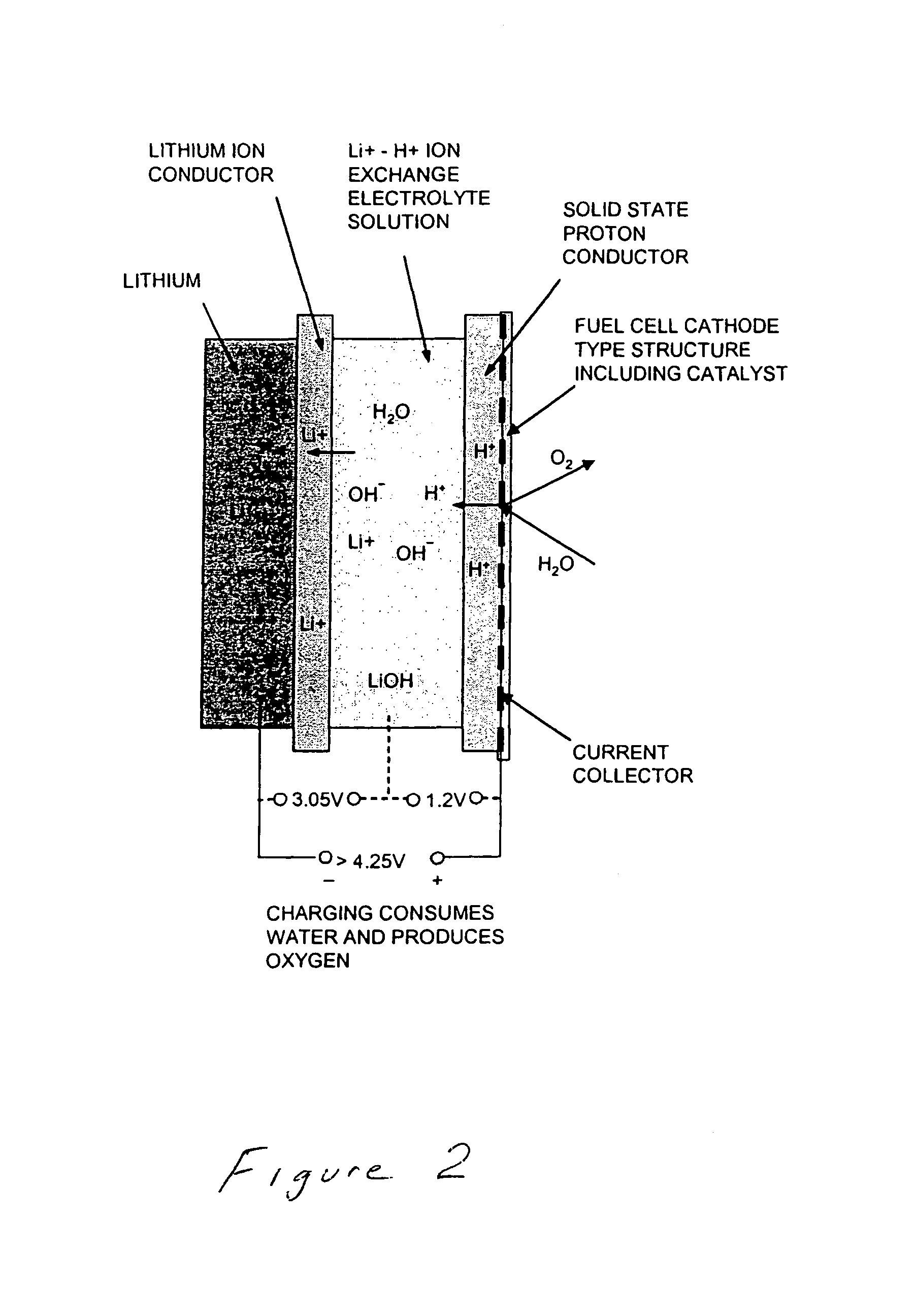Regenerative ion exchange fuel cell
- Summary
- Abstract
- Description
- Claims
- Application Information
AI Technical Summary
Benefits of technology
Problems solved by technology
Method used
Image
Examples
Embodiment Construction
[0013]The explosive energy potential produced by this cell in the form of accumulated hydrogen and oxygen suggests that a more optimal cell design may be possible that could have even higher energy storage potential. One could use a fuel cell to generate electrical energy using the hydrogen and oxygen; however, the associated tanks and gas transport requirements would have an overall degrading impact on energy density. However, if this energy can be harvested efficiently, it represents a further energy gain in the basic battery system. FIGS. 1 and 2 suggest the general structure of such a combined cell, indicating the required layers and transport processes for a functional cell. The proposed system shown in FIGS. 1 and 2 indicate how the energy of the hydrogen can be simultaneously harvested resulting in a safe reversible lithium battery with high energy density. The actual cell may require additional layers for material compatibility or structural reasons.
[0014]The key to this new...
PUM
 Login to View More
Login to View More Abstract
Description
Claims
Application Information
 Login to View More
Login to View More - R&D Engineer
- R&D Manager
- IP Professional
- Industry Leading Data Capabilities
- Powerful AI technology
- Patent DNA Extraction
Browse by: Latest US Patents, China's latest patents, Technical Efficacy Thesaurus, Application Domain, Technology Topic, Popular Technical Reports.
© 2024 PatSnap. All rights reserved.Legal|Privacy policy|Modern Slavery Act Transparency Statement|Sitemap|About US| Contact US: help@patsnap.com










